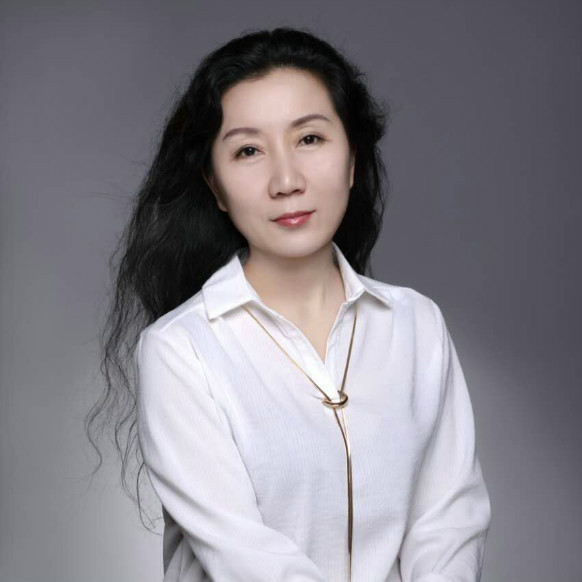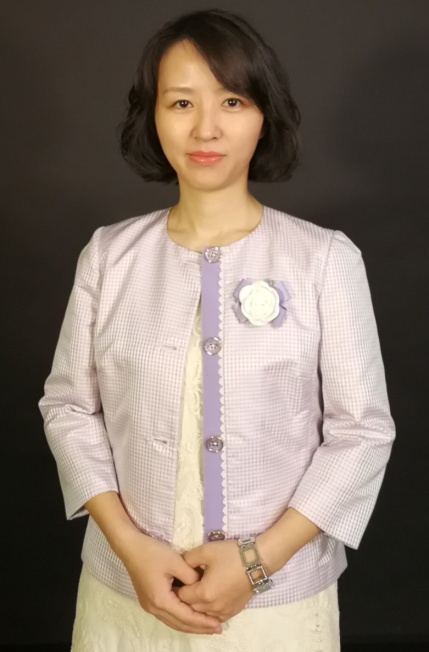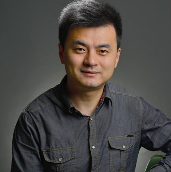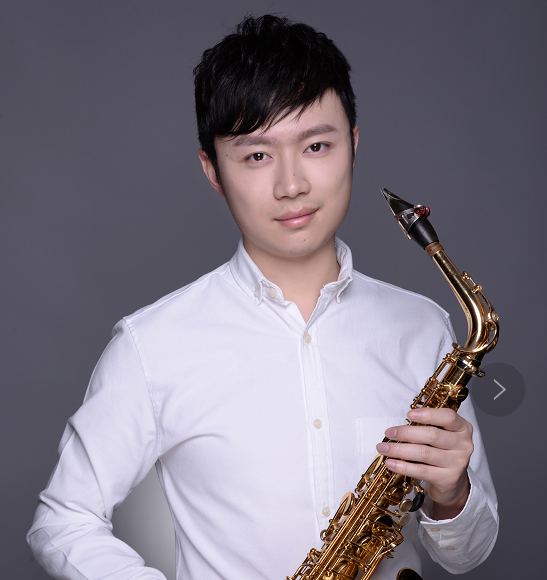
Appreciation of Symphonic Music课程简介:前往报名学习
Listen to sounds of nature, understand philosophy, feel harmony, train thinking!
播放:110次,课程ID:4018040
Listen to sounds of nature, understand philosophy, feel harmony, train thinking!
--1.1 Symphony Music of Nature, Great Beauty and Harmony
-- 2.1 Heart-Chord Group of the Symphony Band
--2.2 Role Musical Instruments - Woodwind Group
--2.3 Clarity in the Sound of Metal - Copper Tube Set
--2.4 Band Skeleton and Atmosphere Rendering - Percussion Group and Color Function Group
-- 3.1 Languages of first-time music
--3.2 Composition of musical melodies
--3.3.1 The intensity and density of the melody (Part One)
-- 3.3.2 The intensity and density of the melody (Part Two)
-- 3.4.1 bright and dark —— big and small (Part One)
--3.4.2 bright and dark —— big and small (Part Two)
-- 3.5.1 Changes in colors (Part One)
--3.5.2 Changes in colors (Part Two)
-- 4.1 Composition of the music
--4.2 Music sentences and paragraphs
--4.3 Comparison and reproduction of music
--4.4 Swing music
--4.5.1 Big and small buildings in music (Part One)
--4.5.2 Big and small buildings in music (Part Two)
--4.6.1 Fun of music change (Part One)
--4.6.2 Fun of music change (Part Two)
--4.7 Symphonic Sonata —— Music and Life
--5.1 Classical music in movies (Part One)
--5.2 Classical music in movies (Part Two)
--5.3 Classic music in animation (Part One)
--5.4 Classic music in animation (Part Two)
--6.1 Wonderful Ballet Music —— Swan Lake Suite (Part One)
--6.2 Wonderful Ballet Music —— Swan Lake Suite (Part Two)
--6.3 Wonderful Ballet Music —— Nutcracker Suite (Part One)
--6.4 Wonderful Ballet Music —— Nutcracker Suite (Part Two)
--6.5 Carnival of Animals —— Orchestra Suite "Animal Carnival " (Part One)
--6.6 Carnival of Animals —— Orchestra Suite "Animal Carnival " (Part Two)
--7.1.1 The Combination of Jazz and classical music —— Piano Concerto Blue Rhapsody (Part One)
--7.1.2 The Combination of jazz and classical music —— Piano Concerto Blue Rhapsody (Part Two)
--7.2.1 Transcend theological Core of Life and Death and Oriental Artistic Conception - The Slow Plate
--7.2.2 Transcend theological Core of Life and Death and Oriental Artistic Conception - The Slow Plate
--7.3.1 perfect combination of "war" and "love "——" warsaw concerto" (Part One)
--7.3.2 perfect combination of "war" and "love "——" warsaw concerto" (Part Two)
--8.1 The Concealment and Emancipation of Human Nature——Taking the Development of Western Music from t
--8.2 The Concealment and Emancipation of Human Nature——Taking the development of Western music from t
--8.3 Tragic Genius —— Mozart's Musical Spirit (Part One)
--8.4 Tragic Genius —— Mozart's musical spirit (Part Two)
--8.5.1 Emotions in the symphony —— lovers' feelings (Part One)
--8.5.2 Emotions in the symphony —— lovers' feelings (Part Two)
--8.6 Emotion in the symphony —— natural feeling
--8.7 Emotion in the symphony —— national sentiment
--8.8.1 Emotion in the symphony —— tragic feelings in the symphony (Part One)
--8.8.2 Emotion in the symphony —— tragic feelings in the symphony (Part Two)
--9.1.1 Orchestra of poetry (Part One)
--9.1.2 Orchestra of poetry (Part Two)
--9.2 From Prelude to Symphony
--9.3 The Czech Mother River —— the Voltava River
--10.1.1 Preface to Symphony Music with Chinese Characteristics (Part One)
--10.1.2 Preface to Symphonic Music with Chinese Characteristics (Part Two)
--10.2 The Love of Traveller —— The homesickness of Inner Mongolia Suite
--10.3 The jubilation of the festival ——" The prelude to Spring Festival "
--10.4.1 A Model for the Exchange of Chinese and Western Music Arts - Violin Concerto "Liang Shanbo an
--10.4.2 A Model for the Exchange of Chinese and Western Music Arts - Violin Concerto "Liang Shanbo an
--10.5.1 Presentation of the Characteristics of Ethnical Music —— Piano Concerto "Yellow River " (Part
--10.5.2 Presentation of the Characteristics of Ethnical Music —— Piano Concerto "Yellow River " (Part
--10.5.3 Presentation of the Characteristics of Ethnical Music —— Piano Concerto "Yellow River " (Par
--10.6.1 The Rhyme of the Nation —— Erhu Concerto "The Great Wall Followings " (Part One)
--10.6.2 The Rhyme of the Nation —— Erhu Concerto "The Great Wall Followings " (Part Two)
--10.7.1 Magnificent epic —— Psalms of Heroes (Part One)
--10.7.2 Magnificent epic —— Psalms of Heroes (Part Two)
--10.8.1 Essence of the Nation —— Zhu Jianer, The Tenth Symphony "Jiang Xue " (Part One)
--10.8.2 Essence of the Nation —— Zhu Jianer, The Tenth Symphony "Jiang Xue " (Part Two)
--10.8.3 Essence of the Nation —— Zhu Jianer, The Tenth Symphony "Jiang Xue "(Part Three)
--10.9.1 Rendering and Contrasting —— Red Classic Music in Chinese Films (Part One)
--10.9.2 Rendering and Contrasting —— Red Classic Music in Chinese Films (Part Two)

曹耿献,女,副教授,现任西安交通大学人文学院音乐教育中心党支部书记。哲学博士,上海音乐学院音乐学专业硕士。现为中国高等教育学会音乐教育专业委员会会员、中国传统音乐学会会员、陕西音乐家协会会员、教育部社科基金评审专家、陕西省教育厅艺术教育委员会评审专家等。2013年在上海音乐学院访学一年,美国德克萨斯大学奥斯汀分校巴特勒音乐学院访问学者。先后承担《交响音乐赏析》、《音乐鉴赏》、《音乐律动与创造》等多门课程的教学工作。在国际刊物、CSSCI以及国家音乐核心类期刊等发表论文近20篇;主持和参与各级各类课题20余项;获奖近20项,其中教育部获奖1项(二等奖)、全国获奖10项,省级获奖5项、西安市获奖1项等。作为主编、副主编等已出版教材6部,作为第一参与译谱人出版《西安鼓乐古曲谱集》1部。迄今为止,所撰写的学术论文已应邀参加国际会议7次。

李娟,西安交通大学人文学院副教授。研究方向:中国音乐美学。中国高等教育学会音乐专业委员会会员。著作有《中国传统音乐赏析》、《华夏艺术历程》、《中国传统文化精义》等多部著作、教材;多篇论文被收录在ICMC(国际计算机音乐会议)等国际会议中;曾获“西安交通大学中青年教师讲课比赛”一等奖;《抗战时期高校校歌中的爱国主义精神研究》和《为世界之光——<国立交通大学校歌>的精神价值分析》获教育部“高校艺术教育科研论文”三等奖。

文茹,2008年毕业于西安音乐学院音乐学系民族音乐学方向,硕士研究生,现任教于西安交通大学人文学院艺术系。自工作以来担任《钢琴演奏艺术实践》、《音乐鉴赏》、《中外名曲赏析》、《音乐的律动与创造》等课程的教学工作;主持和参与省、市、校级课题12余项,其中主持西安交通大学基本科研项目“基于暗示-实现理论的音乐风格特征动态分析——以维也纳古典乐派为例”,2017.3;主持西安市社会科学规划基金项目“西安鼓乐之庙会民俗传承研究”,2014.6;主持陕西省艺术规划课题“西安鼓乐社及其民俗活动考察研究”,2010.4;主持西安交通大学科研基金(人文社科类)项目——“西安鼓乐社及其民俗活动研究”,2009.7。公开发表学术论文8篇(包括CSSCI论文2篇,EI论文2篇);正式出版教材7部:《钢琴艺术理论与实践》、《钢琴艺术理论与音乐欣赏研究》、《中外名曲赏析》、《交响音乐赏析》、《西北民族音乐鉴赏》、《中国传统音乐普修教程》、《音乐鉴赏》。《西安鼓乐之庙会民俗研究》、《非物质文化遗产进入地方高校公共艺术课堂的构想—以陕西普通高校公共艺术教育为例》获中国高等教育学会音乐教育专业委员会第十四次学术论文评审,一等奖、三等奖。2014.7;“陕西省普通高校公共艺术课展评”《音乐鉴赏》授课比赛二等奖,陕西省文化厅2010.3;《Music style analysis among haydn、Mozart and Beethoven:an unsupervised machine learning approach》入选2017第43届国际计算机音乐会议论文集,2017.10。 2016年7月15—21日受英国坎特伯雷基督教会大学音乐与表演艺术学院邀请,做短期访问交流。

方小笛,中国高等教育学会音乐教育专业委员会会员、陕西省音乐家协会会员、陕西省合唱协会理事、全国社会艺术水平钢琴考级评委、西安交通大学人文学院副教授、哲学博士、西安交通大学人文学院音乐教育中心主任。

刘俊峰,博士在读,研究领域:音乐心理学。 2016年硕士毕业于意大利特兰托国立音乐学院,萨克斯管演奏专业, 师从于意大利著名萨克斯管演奏家Marco Albonetti。曾以重奏与独奏的形式于中国、意大利、芬兰、哥斯达黎加等地举办多场音乐会,并广受好评。 获奖:意大利第十届Città di Bardolino“Jan Langosz”国际音乐比赛重奏组满分及一等奖、意大利第七届Antonio Salieri国际音乐比赛重奏组一等奖 、 意大利第一届Rizzardo Bino国际音乐比赛重奏组二等奖、意大利第五届Val Di Sole音乐大赛重奏组满分及一等奖、意大利第九届Città di Piove di Saccco音乐大赛重奏组一等奖。